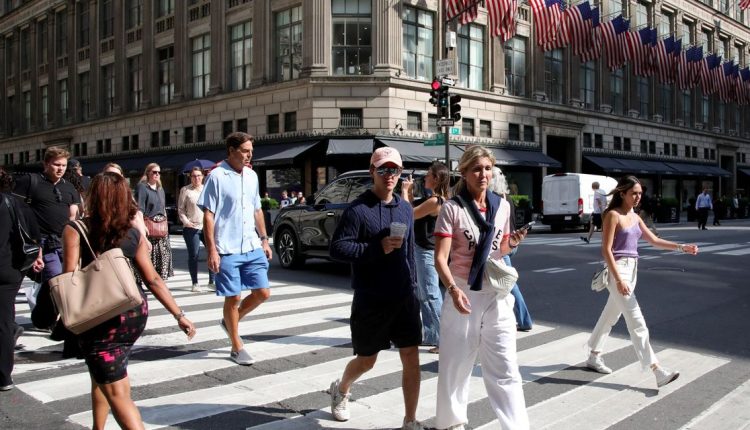The numbers: Total consumer credit rose $10.4 billion in July, down from a revised $14 billion gain in the prior month, the Federal Reserve said Friday. That translates into a 2.5% annual rate, slower than the revised 3.4% gain in the prior month.
Economists had been expecting a $16 billion gain, according to the Wall Street Journal forecast.
Overall credit growth is declining. One year ago, consumer credit was up $28.3 billion as workers tapped credit to keep up with rising prices.
Key details: Revolving credit, like credit cards, rose 9.2% after a rare 0.8% drop in June. That was the first decline since April 2021.
Nonrevolving credit, typically auto and student loans, rose a slim 0.3% in July, down from a 4.8% growth rate in the prior month. This category of credit is much less volatile.
The Fed’s data does not include mortgage loans, which is the largest category of household debt.
Big picture: Consumer spending has picked up in the third quarter, according to government data.
There are signs of stress for low-income workers but overall credit conditions remain in relatively good shape after the pandemic.
Some Fed officials think that the excess savings built up during the stay-at-home period are now running out.
Market reaction: Stocks
DJIA
SPX
were trading slightly higher on Friday. The 10-year Treasury yield
BX:TMUBMUSD10Y
rose to 4.27%.
Read the full article here

